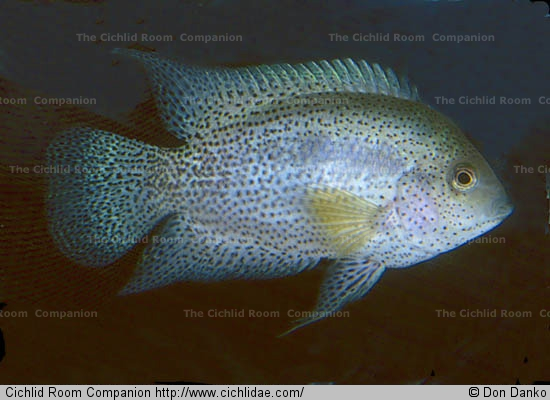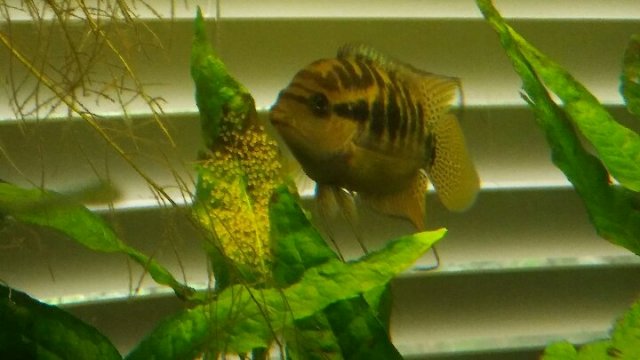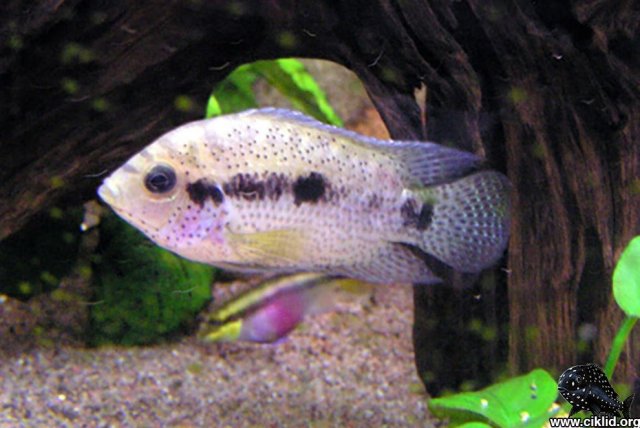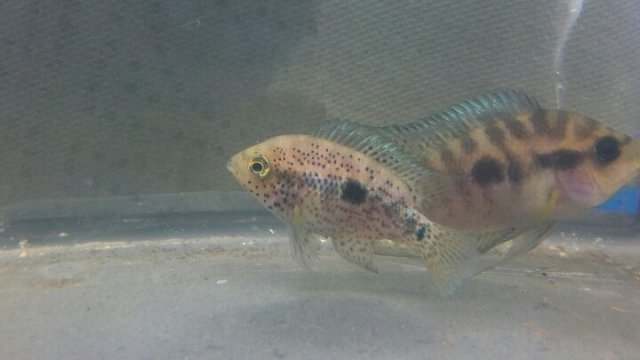About 5 years ago they were fairly easy to come by in the Milwaukee/ Chicago area from breeders, and members of the gcca (of which Sam B was a member)I even saw some in a LFS in Milwaukee back then (which has since gone out of business.)
And as stated above, they were then sold under the Archcentrus genus name.
The info Below is recent
Genus Rocio SchMitter-Soto, 2007a
Type species: Heros octofasciatus reGan, 1903. Type by original
designation. Gender: feminine.
Included species. Rocio gemmata contreraS–balDeraS & SchMit- ter-Soto, 2007a; Rocio ocotal SchMitter-Soto, 2007a; Rocio octofasciata (reGan, 1903); Rocio spinosissima (vaillant & pelleGrin, 1902)
Diagnosis. A monophyletic group of heroine cichlids combining ancestral picker/generalized predator cranial morphology with a lentic postcranial morphology. Rocio is a long isolated lineage of Middle American heroines with most of the unique diagnostic characters found in coloration ontogeny: different from the majority of hero- ines in lacking any traces of the abdominal line during coloration development, the line only being visible in eleutherembryos (see Říčan et al., 2005); coloration on- togeny distinctive by late development of ontogenetic bar 3; all other ontogenetic bars already dorsoventrally con-
tinuous in very early developmental stages; the three an- terior body bars form as already dorsoventrally fused and additionally are initially fused into one large pigmented area which only later divides into three bars; second on- togenetic bar divides into two bars (i.e. three bars present posteriorly from the midlateral spot in adults); unique among Middle American heroines in developing a subor- bital stripe during ontogeny; the timing of development of the suborbital stripe is accelerated, already developed at free-swimming, and is lost in juvenile shes and ab- sent from adult shes as in all Middle American hero- ines. The timing of development of the suborbital stripe is intermediate between the Amazonian heroines and all the other Middle American heroines. Further diagnosable by: elevated number of anal n pterygiophores anteriorly from the rst haemal spine (2); elevated number of anal n spines (> 8); elevated number of dorsal n spines (> 17); pointed conical teeth without a second cusp; fold of lower lip interrupted (frenum); second lower lip small; maxilla extending to below the eye.
Distribution. Rocio has a large distribution area in the Atlantic drainages of Middle America covering the whole Usumacinta ichthyological province between the Actopán river north of Veracruz to the lower Ulua drain- age (Honduras) and including most of the Yucatán pen- insula.
Notes. Rocio octofasciata has been previously included in the sections Parapetenia (reGan, 1905), based on den- tition, or Archocentrus (reGan, 1906), based on its high anal n spine counts. As in case of Herotilapia, the spe- cies has never been recovered as related to Archocentrus. The species has many unique morphological features and deserves a separate generic status. Rocio, based on our results, also includes the much less well known Heros spinosissimus vaillant & pelleGrin, 1902 which shares the here presented generic diagnosis.











